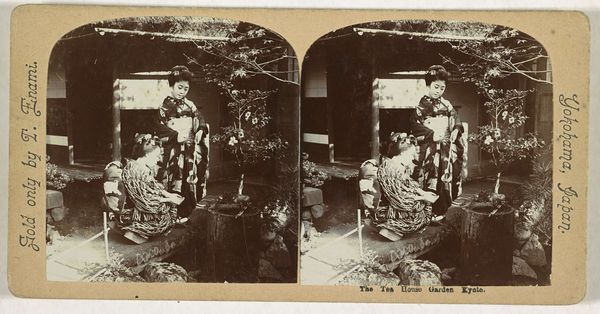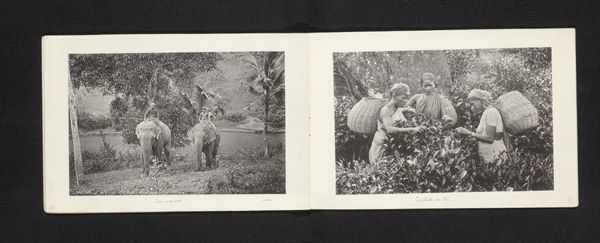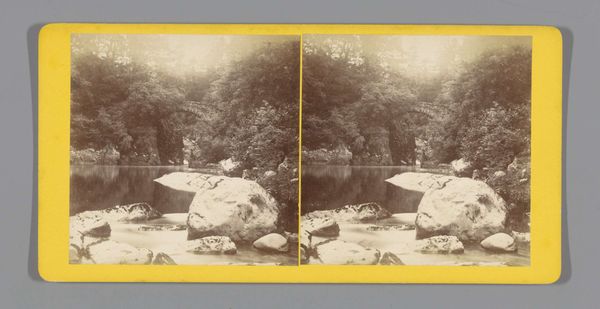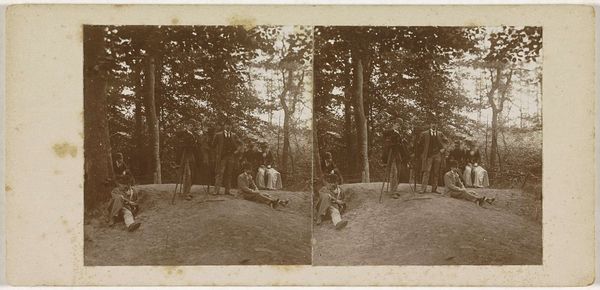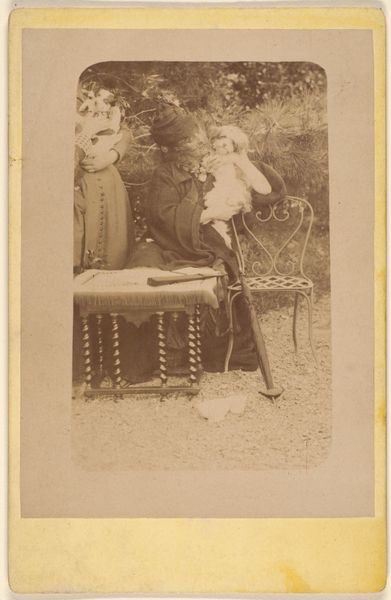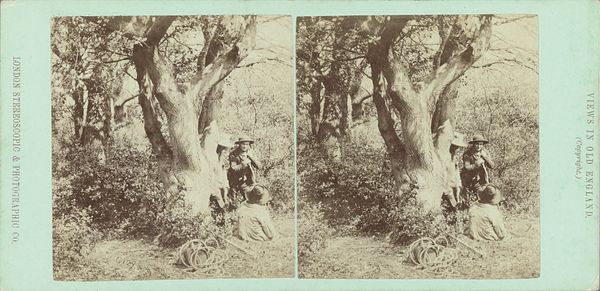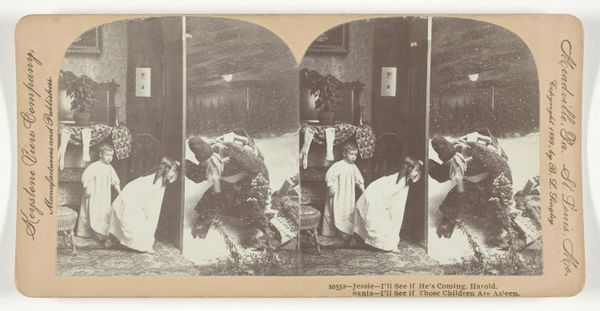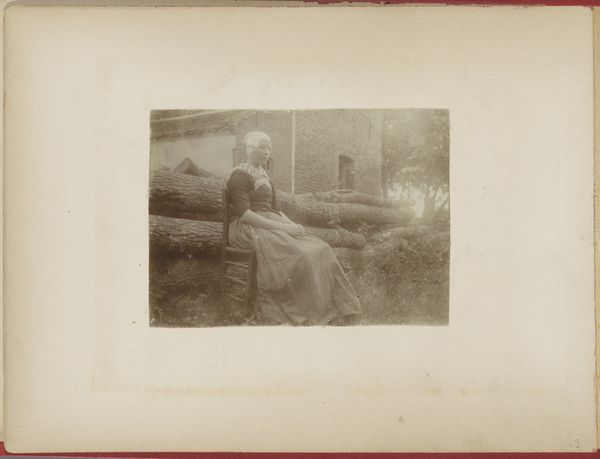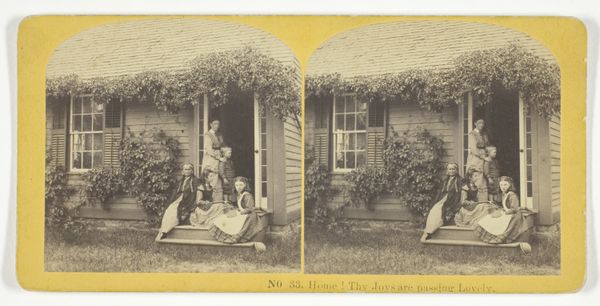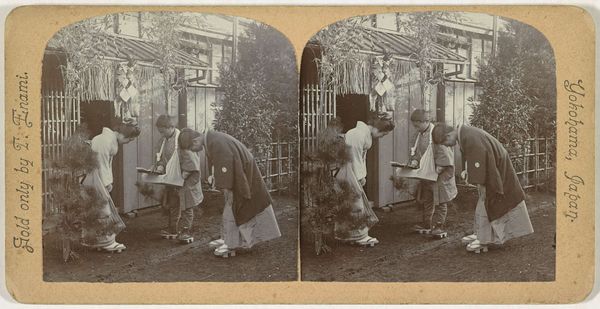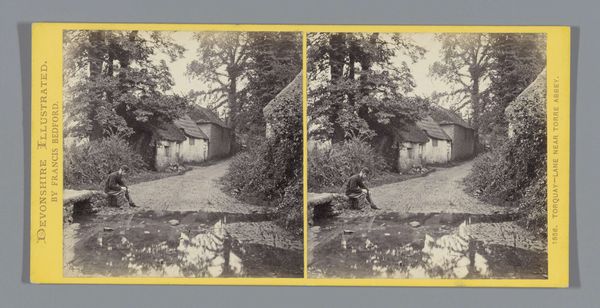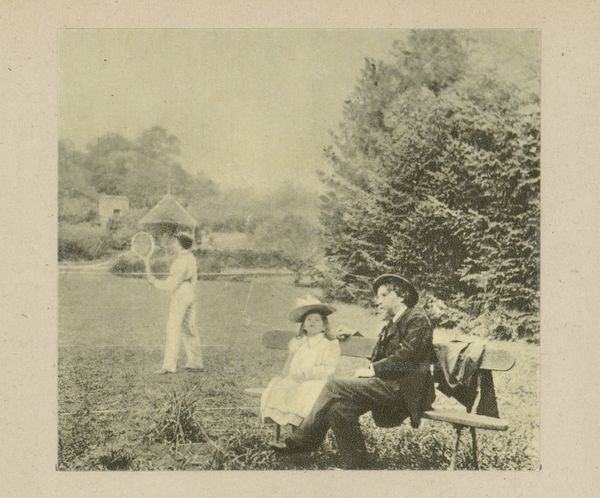
photography
#
garden
#
landscape
#
photography
#
orientalism
Dimensions: height 90 mm, width 178 mm
Copyright: Rijks Museum: Open Domain
Curator: This 1900s hand-tinted albumen print by T. Enami, titled "Two Japanese Girls in a Kyoto Garden," offers a glimpse into a carefully cultivated vision of Japan. Editor: My first impression is serenity. The grayscale palette and soft focus, even with the hand-tinting, give the scene a timeless quality. The placement of the two women feels very deliberate, very composed. Curator: Precisely! Enami, based in Yokohama, catered to the Western fascination with Japan during the Meiji era. Stereoscopic views like these were quite popular, allowing viewers to experience a kind of three-dimensional journey. The image presents what outsiders expect to see, what confirms their imaginings of the country. Editor: It's an orientalist fantasy, certainly, but a visually pleasing one. Notice the composition—the stone lantern, the pond, and even the carefully positioned ducks contribute to a sense of harmony, reflecting the importance of nature and balance within Japanese culture. But one may be tempted to overlook how those expectations become codified into representations. Curator: And how the framing might subtly impact its public reception. Take the kimonos the girls are wearing—every choice in color and pattern serves to enhance that impression for the tourists seeking the exotic. It freezes an imagined culture and also an art in time, presenting it in a kind of curated display for an international public. Editor: These elements also hint at the artificiality of the scene. Are the women professional models in a studio environment? Were such idyllic spaces readily accessible or part of the tourist experience being constructed at that time? There’s a performance implicit within that constructed setting. The photographic medium is employed as documentation, yes, but one with social implication. Curator: Exactly, photography allowed for the distribution of constructed narratives and idealized images that shaped public perception in ways accessible and affordable. Editor: Reflecting on the composition, there is more beyond its harmonious visual nature, it shows power at play—the economic power of those who consume the image and the cultural forces shaping its subjects. Curator: Right! The image becomes not just a pretty picture, but a window onto a complex history of cultural exchange. Editor: Precisely. These nuances remind us that even seemingly simple visual texts can invite us to understand its historical significance.
Comments
No comments
Be the first to comment and join the conversation on the ultimate creative platform.
